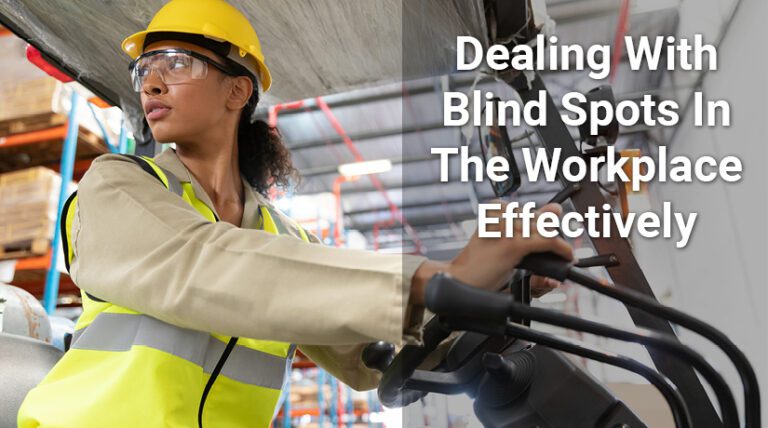Our in-house journalist Alix Gardner explores how safety culture is created – and sometimes forgotten about – and discusses the key elements that health and safety managers should consider when trying to form a strong safety culture in their workplaces.
There’s an advert for a warehouse operative and order picker in the latest version of Warehouse Today*. In fact there are hundreds. All of the job postings have similar requirements:
- Experience in a warehouse environment
- Must be a good team player
- Must be a co-dependent (not sure what this means)
- Must be diligent and pay attention to detail
Experience is a must for these positions, I get that. You shouldn’t employ an inexperienced warehouse operative to join a team of already seamless co-workers.
I also agree with the other requirements; but on most of the many job postings there is no mention of experience in health and safety training, or any mention of any safety knowledge at all – surely it would be beneficial to employ someone with some safety knowledge?
For the past 10 years, world safety organisations, such as The Institution of Occupational Safety (iosh) and the Health and Safety Executive (HSE) have been promoting the idea of workplaces having a healthy ‘safety culture’ – shared values and beliefs that interact with an organisation’s structure and control systems to produce behavioural standards.
Why is a positive safety culture important?
If you have staff in your workplace that you are responsible for, you as a manager have a duty to ensure their safety at every moment that they are on the work premises.
Some feel that it is okay to have safety rules and procedures in place. But this is not enough to meet the legal requirements – if a company is investigated, it needs to show that those safety rules and regulations are being followed.
When your staff and workforce becomes complacent towards rules and regulations, this makes managers’ jobs harder, and health and safety difficult to maintain.
Make safety enjoyable
Positive cultures, where employees actively and positively participate in health and safety, will help in many ways: for a start it will allow all staff members to feel valued because of their active participation in the safety proposals, adding a positive attitude towards risk management. Employees will require less supervision from managers as regulations become sustainable, fulfilling your duty of care and making them feel respected.
A strong safety culture – where employees are involved in procedures and not just instructed – will mean that that productivity and wellbeing will be high, employees will be more committed to company goals and they are then likely to adopt any additions to the safety culture.
New employees
If a workplace feels safe and secure, new members are more likely to accept the safety model and therefore continue the strong safety culture. And what does this ultimately mean? FEWER ACCIDENTS.
Creating a positive safety culture is extremely important for establishing work-related staff behaviours. If undertaken well, the rest of the workforce will undoubtedly follow suit – creating a long lasting safety culture that is sustainable among staff.
How do you build a strong safety culture?
It’s not as hard as it sounds. To begin, and maintain, a strong and positive safety culture in your workplace, set your plan into smaller, easy steps:
-
Communicate well
Building a positive culture is built on good communication. Weekly or monthly safety talks can increase worker participation and can make them feel more included in all safety proposals. It’s best to have all policies easily accessible, via the Intranet or paper form – so staff can read latest and safest news, and changes to policies.
-
Provide all training
When companies provide safety training for employees, it demonstrates their commitment to the wellbeing of their staff. Trained employees are more likely to embrace safety culture if they are aware of up-to-date safety procedures and are fully trained to be aware of all hazards on site and the effects that those hazards may have.
-
Managers – show that you will lead
Following all safety policies as a manager will encourage your employees to do the same. Show that you are proactively committing to safety, and colleagues will do the same. Employees ‘buying in’ to the safety movement is imperative for a safety culture. Safety is more than talking about it; it’s putting those plans in place.
-
A positive reporting process
Develop – and implement – a positive reporting process, where employees are rewarded when they report hazards or safety concerns. Positive safety cultures in a workplace are easier to maintain and build further when employees feel more comfortable about reporting concerns. They will also feel more included and will see how a reporting process has a positive effect.
-
Involve your staff
It’s great to let your staff know that you have a safety process in place, but another way to build their trust and to make them invested in your safety systems is to involve them in your process from the outset. Ask them what they would like from a reporting process, or get their suggestions and feedback on different and current ways of communication.
And remember…
Firstly, to achieve a company’s health and safety culture doesn’t happen quickly, and when making plans to improve an existing culture, you should take into account that the culture will have evolved over a long period.
Secondly, it’s important to have mutual trust and confidence between safety managers and their staff, if you want a strong health and safety culture to develop.
Lastly – A poor health and safety culture is likely to lead to weaknesses due to problems at the person/work interface – perhaps because of poor training or communication. This can create UNNECESSARY accidents.
Invest in a GOOD safety culture. It can save lives.
visit www.zonesafe.net for more safety advice.
*Not its real name




